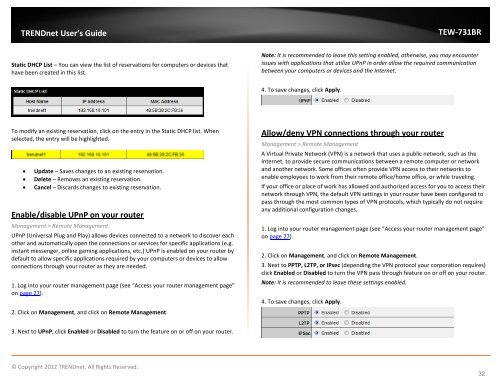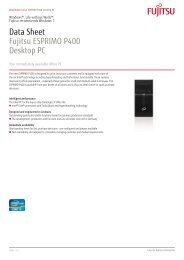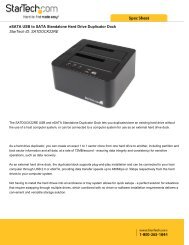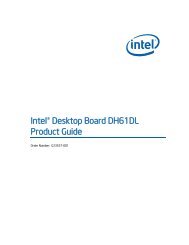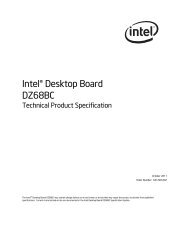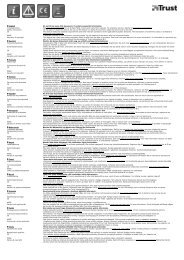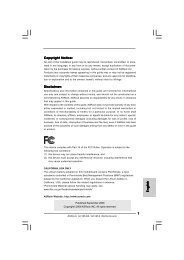Download - TRENDnet
Download - TRENDnet
Download - TRENDnet
You also want an ePaper? Increase the reach of your titles
YUMPU automatically turns print PDFs into web optimized ePapers that Google loves.
<strong>TRENDnet</strong> User’s Guide<br />
TEW-731BR<br />
Static DHCP List – You can view the list of reservations for computers or devices that<br />
have been created in this list.<br />
Note: It is recommended to leave this setting enabled, otherwise, you may encounter<br />
issues with applications that utilize UPnP in order allow the required communication<br />
between your computers or devices and the Internet.<br />
4. To save changes, click Apply.<br />
To modify an existing reservation, click on the entry in the Static DHCP list. When<br />
selected, the entry will be highlighted.<br />
• Update – Saves changes to an existing reservation.<br />
• Delete – Removes an existing reservation.<br />
• Cancel – Discards changes to existing reservation.<br />
Enable/disable UPnP on your router<br />
Management > Remote Management<br />
UPnP (Universal Plug and Play) allows devices connected to a network to discover each<br />
other and automatically open the connections or services for specific applications (e.g.<br />
instant messenger, online gaming applications, etc.) UPnP is enabled on your router by<br />
default to allow specific applications required by your computers or devices to allow<br />
connections through your router as they are needed.<br />
1. Log into your router management page (see “Access your router management page”<br />
on page 27).<br />
2. Click on Management, and click on Remote Management.<br />
Allow/deny VPN connections through your router<br />
Management > Remote Management<br />
A Virtual Private Network (VPN) is a network that uses a public network, such as the<br />
Internet, to provide secure communications between a remote computer or network<br />
and another network. Some offices often provide VPN access to their networks to<br />
enable employees to work from their remote office/home office, or while traveling.<br />
If your office or place of work has allowed and authorized access for you to access their<br />
network through VPN, the default VPN settings in your router have been configured to<br />
pass through the most common types of VPN protocols, which typically do not require<br />
any additional configuration changes.<br />
1. Log into your router management page (see “Access your router management page”<br />
on page 27).<br />
2. Click on Management, and click on Remote Management.<br />
3. Next to PPTP, L2TP, or IPsec (depending the VPN protocol your corporation requires)<br />
click Enabled or Disabled to turn the VPN pass through feature on or off on your router.<br />
Note: It is recommended to leave these settings enabled.<br />
4. To save changes, click Apply.<br />
3. Next to UPnP, click Enabled or Disabled to turn the feature on or off on your router.<br />
© Copyright 2012 <strong>TRENDnet</strong>. All Rights Reserved.<br />
32


